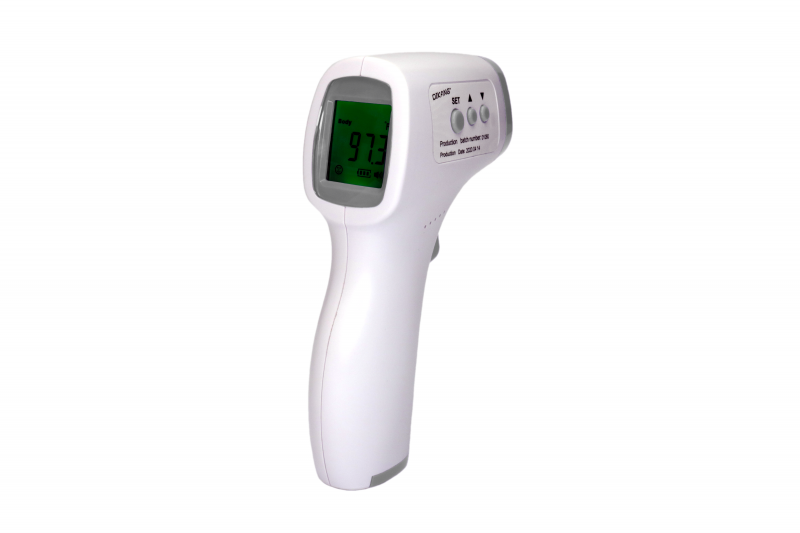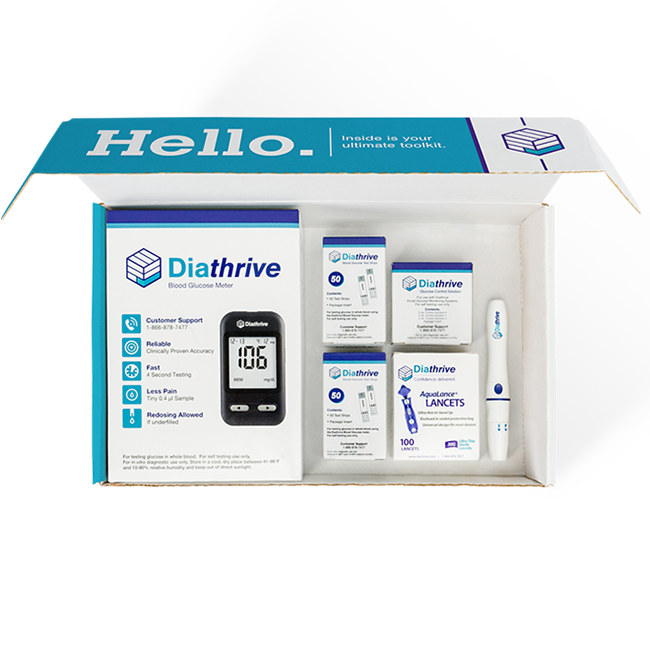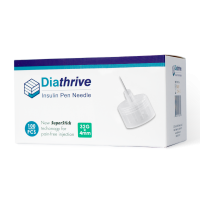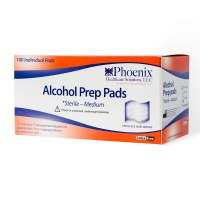
Thermometers are an important tool in your diabetes tool box. Here’s the scoop on types of thermometers, and the pros and cons of using a no-touch forehead thermometer.
Temperature is a vital sign that gives important information about your health. A higher-than-normal temperature might mean that your immune system has been activated to fight an infection. Lower-than-normal temperature can be an early sign of conditions like hypothyroidism, also known as an under-active thyroid.
It’s best to consult your healthcare provider if you consistently have lower than normal body temperature, as it may be a sign of an underlying health condition. (We will review what is considered “normal” temperature a little later in this article.)
Your body temperature has a big tie to metabolism, and since diabetes is a metabolic disorder, it can affect your natural heat regulation. Insulin levels, circulation, and nerve problems can also interfere with your body’s natural heat regulation. Insulin helps raise your core body temperature, sort of like an internal thermostat.
For people living with type 1 diabetes, it’s common to have a low core body temperature. This is because you have no insulin supply. That’s why low body temperature (below 97 degrees) may sometimes be an early sign of type 1 diabetes.
It’s not as simple for people living with type 2 diabetes, however. You might think that because people with type 2 diabetes have higher insulin levels, they should be warmer, but they actually usually feel cold instead. There are theories about why people with type 2 diabetes feel cold, usually linked to how long your insulin level has been high. If you have high insulin levels for a long time, your body starts storing fat instead of burning it, and extra fat interferes with blood circulation, making you feel cold.
A thermometer can be a useful tool for monitoring your health if you are living with diabetes. You have lots of choices when it comes to thermometers, so let’s first review those choices before we talk about temperature and health.
Types of Thermometers
Thermometers have come a long way. What used to take minutes can now be done in a matter of seconds. These days, it’s amazing how many different types of thermometers are available. Depending on the type, thermometers are used on the forehead, mouth, armpit, or rectum.
Thermometers come in two basic types: touch/contact thermometers, and remote/no-touch thermometers. As the names suggest, one type must come in contact with your body to measure your temperature and the other can be used without touching your body.
Touch Thermometers:
-
Glass and mercury thermometers are “old school” thermometers. Some people may not even remember these types of thermometers, but they used to be the only option. These thermometers take readings from under your tongue, the rectum, or armpit, but are no longer widely available due to safety concerns.
-
Digital thermometers take readings from under your tongue, from the rectum, or under the armpit. It gives readings in a minute or less.
-
Electronic ear thermometers take readings from inside your ear. These types of thermometers must be positioned correctly to give accurate results.
-
Other types of contact thermometers include plastic strip thermometers that are placed on your forehead, and pacifier thermometers used for babies. These types of thermometers provide approximate temperature readings.
No-Touch Thermometers:
-
Forehead thermometers come in contact and no-touch designs. The no-touch type of thermometer reads the heat waves coming off the temporal artery in your forehead. This artery runs across your forehead just below your skin. Forehead thermometers are the most common form of no-touch thermometer. They are also known as a temporal artery or infrared thermometer.
-
Other no-touch thermometers include no-touch ear thermometers, and no-touch temporal thermometers for children.
Modern Medicine’s Choice? No-Touch Forehead Thermometers
No-touch thermometers measure temperature from a distance by measuring the heat waves (infrared radiation) coming from your body, most often your forehead. Because it is so easy to use and doesn’t require contact with the person, forehead thermometers are the most commonly used thermometer in doctors' offices.
If you are a parent, you will appreciate this thermometer because it is very fast to use, causes no discomfort, and your child doesn’t have to necessarily cooperate to use it. If you have ever tried to take a wiggly or unhappy child’s temperature (or even an irritable adult), the forehead thermometer is a standout compared to other designs.
You may have seen widespread use of no-touch forehead thermometers during the COVID-19 pandemic because of the need for a no-touch option during this time. In fact, getting your temperature taken with a no-touch thermometer has become part of the new normal.
Since these thermometers don’t even touch your body, you might ask yourself: “Are no-touch thermometers accurate?”
Research has shown that no-touch thermometers are accurate if used correctly. In fact, studies show they are accurate even for use with children who may be restless and resistant to having their temperature taken.
So, the answer to this question is: Yes — no-touch thermometers are absolutely accurate.
However, there are some factors to be aware of when using a no-touch forehead thermometer. These are external factors to be precise, and they can affect the reading of a no-touch thermometer. It stands to reason, if you are measuring your temperature externally (like with a no-touch thermometer), rather than internally (like with a digital thermometer), the reading may be a bit different.
The external factors that can affect no-touch thermometer readings include:
-
Direct sunlight, cold temperatures, and sweat. If you think about it, this makes sense. Direct sunlight can warm the thermometer itself, or the person you are using it on. Likewise for cold temperatures. If your face is exposed to the cold, it might give an incorrect reading that is not representative of your core temperature. Sweating is caused by exertion, a rise in temperature outside, a fever, or or any combination of these factors. The moisture from sweating also cools the skin and evaporates for further cooling. This is why sweat can affect the accuracy of a no-touch thermometer.
-
Dirt. Most of us don’t have dirty foreheads, but it does happen, especially in children. Basically, anything obstructing the reading like dirt can affect the thermometer’s accuracy.
-
How you use a no-touch thermometer. For example, holding the thermometer at different distances will give different results. That’s why it is important to hold it the same way and the same distance from the forehead every time. The manufacturer’s instructions will let you know the distance to hold the thermometer away from the subject.
There are lots of benefits to no-touch forehead thermometers. They are non-contact and non-invasive, and since the thermometer doesn’t touch the patient, you are less likely to transmit illness with use. These types of thermometers also generally have easy-to-read screens, and some come with extra large text to make it easier for those with vision challenges.
What Is Normal Temperature?
So, you have your thermometer and take a reading. The temperature reading is slightly above or below what you expect. Does that mean you or our family member has a fever or some other problem? Maybe, but probably not — it all depends on what your normal temperature is like.
For most of us, 98.6 degrees Fahrenheit (F) is what we consider “normal” temperature, but we know through practical use of thermometers that we almost never get a reading that is exactly 98.6 F. Your normal body temperature changes throughout the day, with generally a lower temperature in the morning and higher temperature in the afternoon. In fact, your body can fluctuate as much as 1 degree F throughout a single day.
There also is some scientific evidence that “normal” temperature is changing. The established normal temperature actually came from a study conducted in the 1800s. More recent studies indicate that normal is somewhat lower than that, averaging 97.5 to 97.9 degrees F. But the reality is that there isn’t one true, strict definition of normal temperature. We are all a bit unique in this way.
Rather than defining what is normal, it is more helpful to identify what is abnormal, or what temperature is considered a fever.
A temperature between 97 and 99 degrees F is considered normal, and a temperature higher than 100.4 F is considered a fever.
A fever indicates that something out of the ordinary is happening in your body. A fever could mean you are sick or have an infection. A temperature below 97 degrees is also concerning because it can be an early sign of a medical condition.
In summary, body temperature gives clues to what is happening in our bodies like infections, illness or even type 1 diabetes or other conditions. No-touch thermometers are a good choice to monitor your body temperature because they are easy to use and give accurate results in most circumstances.
When using a no-touch thermometer, make sure your skin is clean and dry, you and the thermometer are out of direct sunlight, and use the no-touch thermometer according to the manufacturer’s directions.
Sources:
Are Infrared Thermometers Accurate? | Cleveland Clinic
Thermometers: Understand the options | Mayo Clinic
Body Temperature: What Is (and Isn’t) Normal? | Cleveland Clinic





